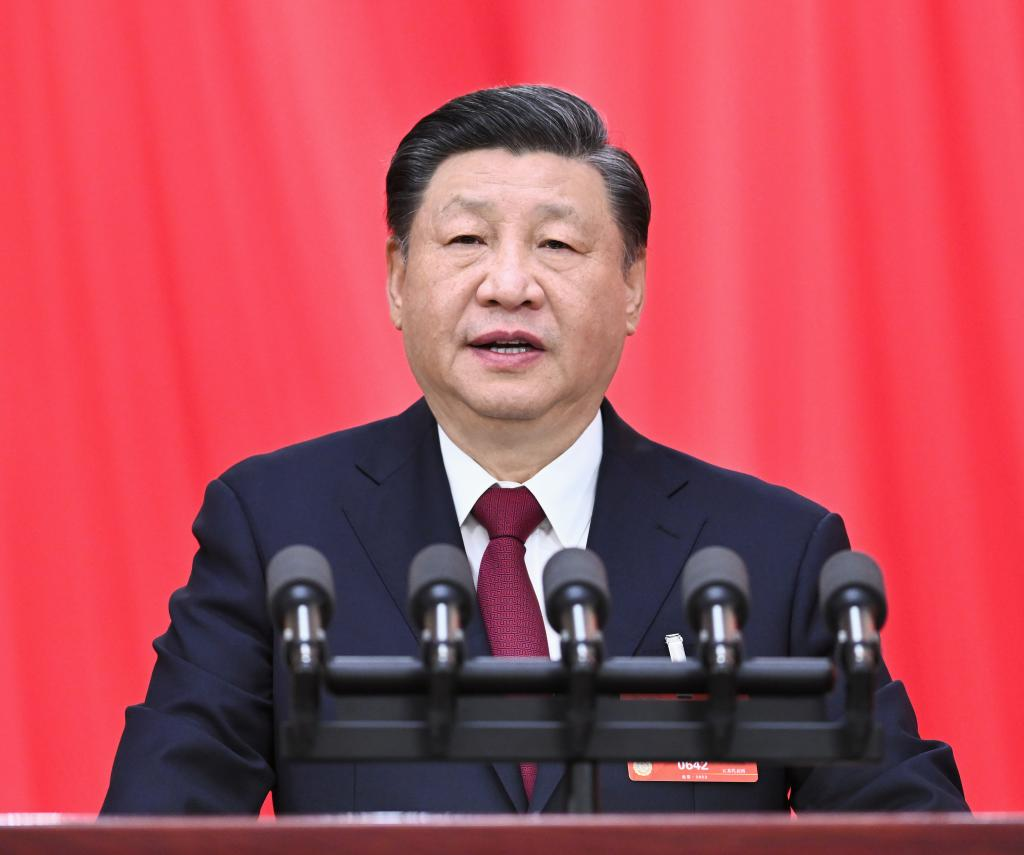

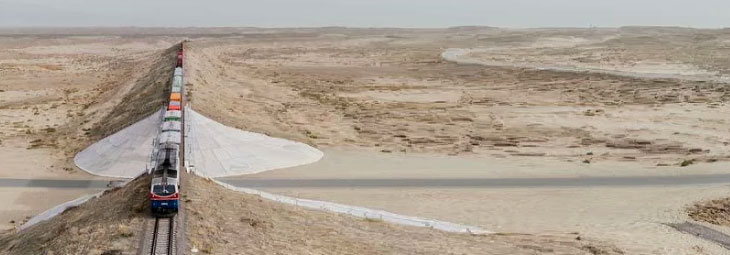
"We are ready to work with political parties of all countries to promote high-quality development of Belt and Road, accelerate the implementation of the Global Development Initiative, foster new growth drivers for global development, and build a global development community."
——Speech by President Xi Jinping at the CPC in Dialogue with World Political Parties High-level Meeting on March 15, 2023
In the autumn of 2013, President Xi Jinping put forward the major initiatives of building the Silk Road Economic Belt and the 21st Century Maritime Silk Road. Today, the Belt and Road Initiative (BRI) is celebrating its 10th anniversary. In the past decade, China has signed cooperation documents with more than 150 countries and over 30 international organizations. Adhering to the principle of extensive consultation, joint contribution and shared benefits, China and countries along the Belt and Road have always taken "hard connectivity" in infrastructure as an important direction, "soft connectivity" in rules and standards as an important support, and "heart-to-heart connectivity" with people in co-building countries as an important basis. Positive progress and a series of major achievements have been made[1]. In the past decade, the urban and rural planning professionals have actively participated in the BRI, implemented the development concepts of "peace and cooperation, openness and inclusiveness, mutual learning, mutual benefit and win-win" and "a community with a shared future for mankind", and made remarkable achievements in various aspects.
【Win-win cooperation】
"What are the trends in the world today? There is only one answer: peace, development, cooperation and win-win."
——Speech by President Xi Jinping at the Körber Foundation in Germany on March 28, 2014
The BRI is in line with the historical trend of economic globalization, the call of the times for the transformation of the global governance system, and the aspiration of people around the world for a better life. This is what makes it so resilient and dynamic. On January 10,2023, the World Bank released its latest Global Economic Prospects report, lowering its forecast for global economic growth in 2023 to 1.7%, 1.3 percentage points lower than its forecast in June last year. Against the backdrop of headwinds in economic globalization and sluggish world economic recovery, the BRI is playing a more important role in boosting economic growth of relevant countries and regions and promoting common development of the world. According to the research report of World Bank in 2019, if all transport infrastructure projects under the Belt and Road framework are implemented, they are expected to generate annual global benefits of US $1.6 trillion by 2030, accounting for 1.3% of the global economy[2].
“Our friends in Southeast Asia say that the lotus flowers grow taller as the water rises. Our friends in Africa say that if you want to go fast, walk alone; and if you want to go far, walk together. Our friends in Europe say that a single tree cannot block the chilly wind. And Chinese people say that when big rivers have water, the small ones are filled; and when small rivers have water, the big ones are filled. ”
——Keynote Speech by President Xi Jinping at the Boao Forum for Asia Annual Conference 2015
Under the basic framework of "six corridors, six roads, multiple countries and multiple ports", the BRI has formed a five-in-one spatial layout of "land, sea, air, network and ice", as well as a layout of multi-dimensional propulsion. Major progress has been made in building transport facilities along the Belt and Road. The China-Laos Railway was successfully opened to traffic, and cross-border cargo transport now covers Laos, Thailand, Myanmar, Malaysia, Cambodia, Vietnam, Bangladesh, Singapore, etc., with more than 1,200 types of cargo transported from 10 in the initial stage. From "one line" to "one network", the China-Europe Railway Express has expanded from "one line" to "one network", with 82 routes connecting more than 200 cities in 24 European countries, becoming a major international transport artery linking the Eurasian continent. The Jakarta-Bandung high-speed Railway went into trial operation, the China-Thailand Railway entered the stage of comprehensive construction, and the Budapest-Belgrade Railway made smooth progress. The Yawan-Wahdatt Railway Bridge tunnel in Tajikistan was completed, the China-Maldives Friendship Bridge was completed, and the Peljesac Bridge in Croatia was opened to traffic. The China-Kyrgyzstan-Uzbekistan Highway was officially opened to traffic, the Heihe-Blagoveshchensk Road Bridge was opened to traffic, and the Sheyman-Guyana Highway completed its major civil works. East Africa has its first expressway, and Kenya has its first modern railway.

Site of the launch of China-Europe Railway Express (Shenyang) Assembly Center [Photo by Qiu Yuzhe/People's Daily]
Energy infrastructure construction under the BRI is progressing. The Merah Power Transmission Project of the China-Pakistan Economic Corridor has officially delivered electricity, providing a solid guarantee for local industrial production. The China-Russia nuclear energy cooperation project has started, setting a good example for high-level international nuclear energy cooperation. China and Saudi Arabia successfully signed a contract on the Red Sea New City energy storage project, which will help Saudi Arabia advance its Vision 2030 and National Transformation Plan.
Information connectivity under the BRI continues to improve. The 2Africa Cable project, which China Mobile is participating in, is being accelerated. Tencent and Alibaba have put into operation several overseas cloud computing centers to provide global cloud services and contribute to the digital and intelligent transformation of partner countries[3].
“On the road ahead, we should stick to the path of peaceful development, pursue a win-win strategy of opening-up, and continue to work with people of all countries to build a community with a shared future for mankind.”
——Keynote Speech by President Xi Jinping at the Conference celebrating the 70th anniversary of the founding of the People's Republic of China in 2019
The BRI has boosted the economic development of cooperating countries. From 2013 to 2021, cumulative trade in goods between China and countries along the Belt and Road reached nearly US $11 trillion, and two-way investment exceeded US $230 billion. The development opportunities brought by enhanced connectivity are fully evident. The China-Pakistan Corridor has opened up Pakistan from Gwadar Port to Khunjerab Pass in the north, built a number of important energy power stations and boosted local industrial development. Belarus has its own car industry, the Greek port of Piraeus is back to life, and Serbia's Smederevo steel works are thriving.
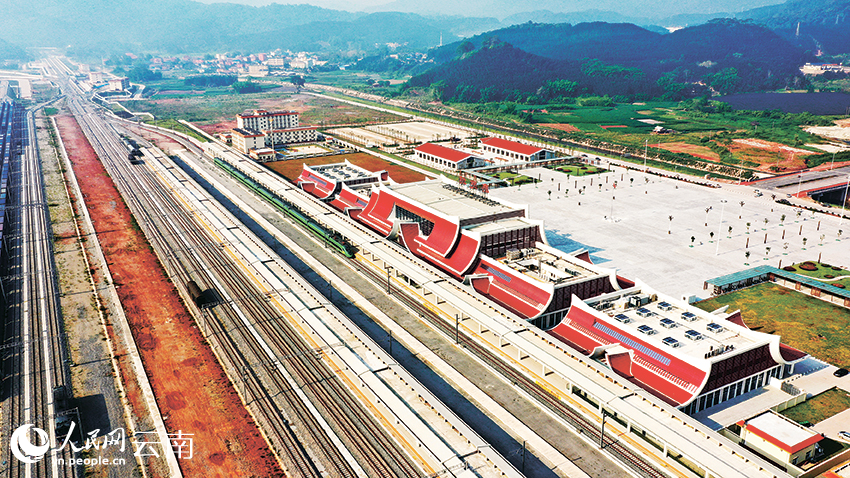
The Mohan Station of the China-Laos Railway connects China and Laos, opening up a new transportation pattern for international transport [Photo by Yao Wei]
The thriving China-Laos railway demonstrates the vitality of high-quality Belt and Road cooperation. By early December last year, the railway had carried 11.2 million tons of goods, with the value of cross-border transport exceeding 13 billion yuan. Tropical fruits from Southeast Asia can be transported to China in as little as 26 hours via the China-Laos railway. Laos thus realized the dream of becoming a land-locked country to a land-linked country. An official from Thailand's Kaitai Bank said that the China-Laos railway has promoted the rapid development of regional trade and brought immediate economic benefits to neighboring countries.
“Only through win-win cooperation can we achieve great and lasting achievements.”
——On 24 June 2022, President Xi Jinping hosted the High-Level Dialogue on Global Development by video and delivered an important speech
Overseas economic and trade cooperation zones invested and built by Chinese enterprises have always been the engine driving trade and economic growth of countries along the Belt and Road, providing an important platform for Chinese enterprises to "go global" and international cooperation. At present, Chinese enterprises have built more than 100 overseas economic and trade cooperation zones, and those jointly built with countries along the Belt and Road account for more than 70 percent of the total. By the end of 2022, Chinese enterprises had invested 397.9 billion yuan in such zones and created 421,000 local jobs.
Take the Malaysia-China Kuantan Industrial Park (MCKIP) established in 2013 as an example. In the past 10 years, the MCKIP has signed a total of 12 projects, with a total investment of over 40 billion yuan, a total industrial output of over 35 billion yuan, and long-term employment of about 5,000 jobs. It is expected to drive an annual increase of 10 million tons of throughput of Kuantan Port. "The MCKIP has become one of the most successful industrial parks in the East Coast SEZs. The Malaysia-China 'two countries and two parks' model is a success." said Baidzawi, chief executive officer of Malaysia's East Coast Special Economic Zone Development Council[4].
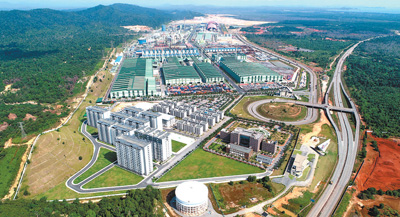
Panorama of Malaysia-China Kuantan Industrial Park [Photo/People's Daily]
【People's welfare】
"We should consider the well-being of our people, uphold the vision of a community with a shared future for mankind, and make due contributions to building a better world with concrete actions."
——Remarks by President Xi Jinping at the 12th BRICS Summit on 17 November 2020
According to the report titled "Belt and Road Economics: Opportunities and Risks of Transport Corridors" released by the World Bank, transport projects under the BRI will reduce trade costs, and the cooperation under the BRI is expected to lift 7.6 million people out of extreme poverty and 32 million out of moderate poverty by 2030. Infrastructure construction has effectively improved the living standards of people in the countries along the Belt and Road. A number of infrastructure projects in transport, communications, energy and water conservancy built by Chinese companies in the countries along the Belt and Road have strongly promoted regional economic development and improved people's livelihood. The residents of Sri Lanka have access to 24-hour tap water, and the villagers of Cambodia have bid an end to their lives without electricity, roads and isolation from the outside world. The Puttalam coal-fired power station in Sri Lanka, built by China, is the largest generating power station in the country, and has greatly eased the power shortage after its completion and operation[5]. Since the operation of the Mombasa–Nairobi Standard Gauge Railway in Kenya, the logistics cost has been reduced by 40%, which has played a significant role in driving the economic and social development of Kenya and East Africa.
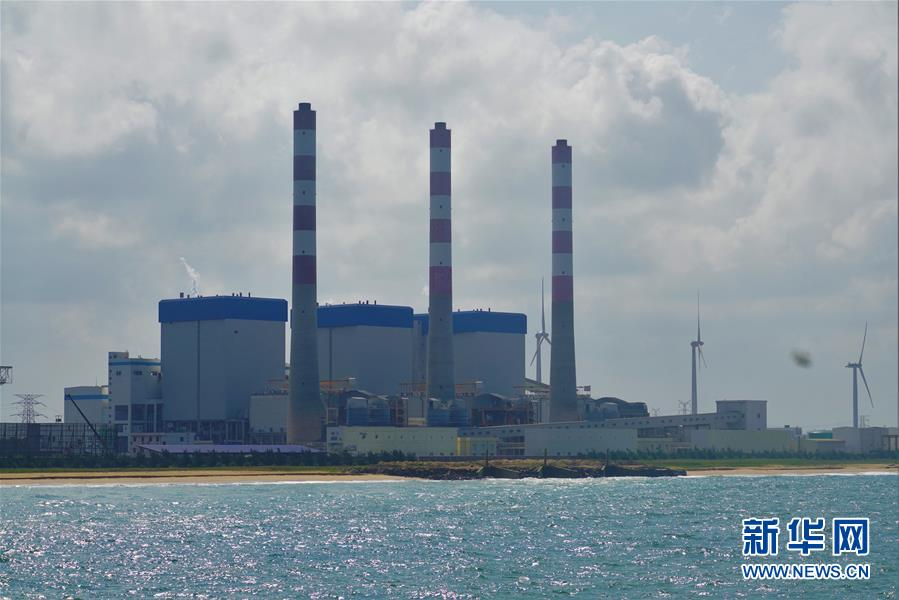
Puttalam coal-fired power station in Sri Lanka on March 8, 2019 [Photo by Tang Lu, Xinhua News Agency]
“Only when people of all countries live a good life can prosperity be sustained, security be guaranteed and human rights be based.”
——On June 24, 2022, President Xi Jinping hosted and delivered an important speech at the Global Development High-Level Dialogue via video in Beijing
Chinese companies have invested in a large number of projects abroad, which have directly created a large number of jobs for the host countries, and created a large number of job opportunities after the completion of these projects. Some research reports from Western countries show that the localization rate of employees in Chinese companies in Africa exceeds 85%, effectively boosting employment of the local population. In recent years, China has built a number of overseas industrial parks, which, as platforms for overseas industrial investment, have made significant contributions to local industrial development and employment. In many places, one person employed has lifted the whole family out of poverty. The China-Laos Railway has boosted the value of land along the railway and the development and utilization of tourism, agriculture and other resources, creating unprecedented conditions for more than two million people along the railway to find jobs and start businesses. In the village not far from Vientiane Railway Station in Laos, many villagers who used to rely on the weather for food and had nothing to do in their leisure time now rely on selling traditional local food to passengers of China-Laos Railway to support their families. Some also opened small restaurants and hotels. "The Laos-China Railway has completely changed our lives." The words of the deputy head of local village represent the voice of the Lao people[6].
On January 11, 2023, in the southern suburb of Addis Ababa, capital of Ethiopia, the five-star red flag and the African Union flag were displayed in the wind. The completion ceremony of the Africa Centers for Disease Control and Prevention (Phase I) aided by China to the African Union was held here. This flagship project of China-Africa cooperation which was personally cared and promoted by President Xi Jinping, is the first center for disease control and prevention in Africa with modern office and laboratory conditions and complete facilities. It is of great significance to improving disease prevention, surveillance and emergency response in Africa. China and Africa have helped each other to fight the pandemic in solidarity and demonstrated the true meaning of the vision of a community with a shared future for mankind with concrete actions[7].
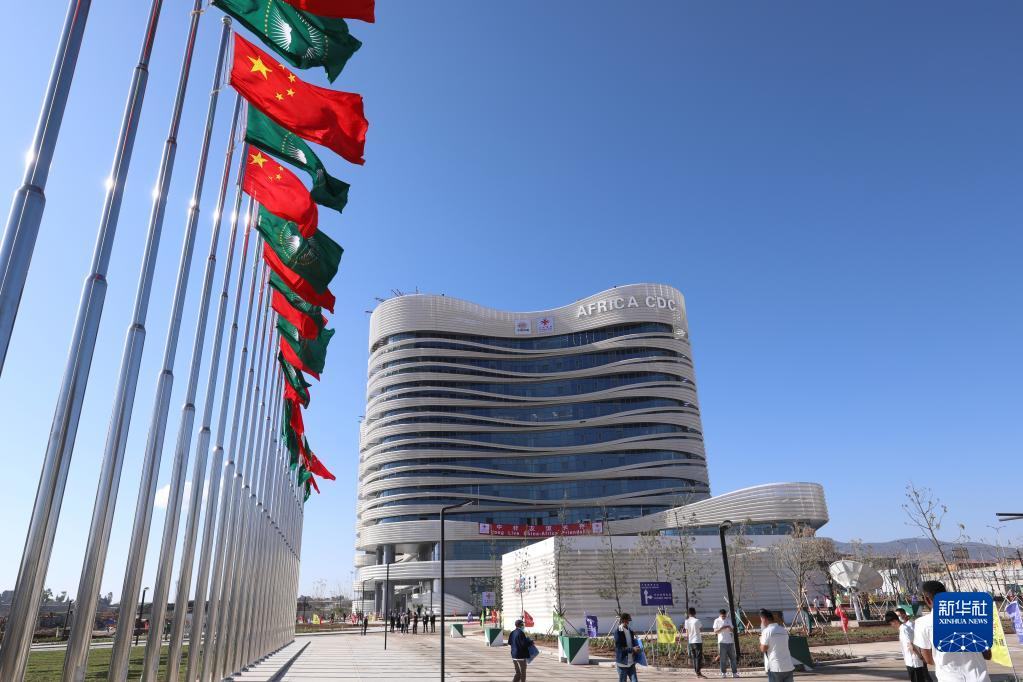
The Headquarters of the Africa Centers for Disease Control and Prevention (Phase I) project aided by China to the African Union has been completed [Photo by Dong Jianghui/Xinhua]
【Civilization exchange】
“ Let exchanges and mutual learning among civilizations become a bridge of friendship between peoples, a driving force for human progress and a bond for world peace.”
——On 27 March 2014, President Xi Jinping delivered an important speech at the UNESCO headquarters in Paris
Education is the foundation of development, and cultural education and vocational training promote cultural exchanges among countries. China has built a number of primary and secondary schools in Nepal, Armenia, etc., and provided computers and other teaching materials to improve basic teaching conditions. In Vanuatu, the Malapoa College, expanded with Chinese assistance, is praised by local people as "like a lighthouse, illuminating the path of knowledge for the young generation"[8]. In Afghanistan, Rwanda, etc., China has helped build a number of vocational and technical schools and training centers, and in Djibouti, Egypt, etc., "Luban Workshops" have been set up by Chinese vocational education schools to provide practical technical training to local youth.
In 2022, with the support of the Urban Planning Society of China (UPSC) and based on the CAST Program of International Collaboration Platform for Science and Technology Organizations in Belt and Road Countries, the Training Workshop on Global Industrialization, Urbanization and Spatial Planning was held. More than 230 students from more than 30 countries along the Belt and Road participated, including scholars, students, government officials, industrial park practitioners, planning and design technicians, etc.
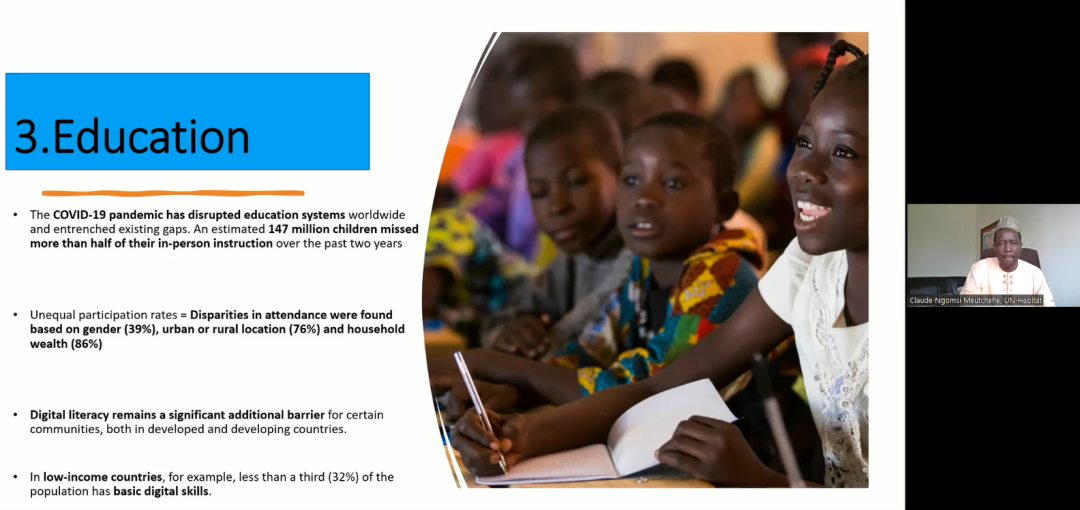
Dr. Claude Albert Meutchehe Ngomsi from UN-Habitat delivered the training lecture
“We should jointly advocate respect for the diversity of world civilizations” and “we should jointly advocate and promote the common values of mankind.”
——Speech by President Xi Jinping at the CPC in Dialogue with World Political Parties High-level Meeting on March 15, 2023
Infrastructure construction and technical cooperation have promoted the spread and exchange of civilization. The “Access?to Satellite TV for 10,000 African Villages” project aided by China to Africa has connected more than 10,000 villages in 25 countries south of the Sahara with satellite TV signals, enabling African villagers to watch digital TV and gain more convenient access to knowledge and market information.
Under the unified coordination of UNESCO, in the 1990s, the international community launched assistance for the protection of Angkor heritage site in Cambodia. Task forces or academic institutions from more than 10 countries, including China, carried out on-site protection and research work on Angkor heritage site. In January 2018, China and Cambodia signed an agreement under which the Cambodian government handed over the royal Palace site, the core part of Angkor heritage, to the Chinese team for restoration. According to Chinese experts, more than 160 Cambodian technicians and workers were working with the Chinese side at the peak of the restoration construction. The restoration process respects the traditional construction methods and techniques of Cambodia, not only restoring and protecting the appearance and historical information of the heritage, but also the continuation of traditional techniques[9].
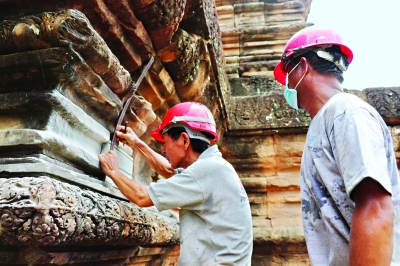
On July 9, 2018, the Chinese-Cambodian Government's Angkor Heritage Site Protection Task Force carried out the final work of the conservation and restoration project of the Ta Keo Temple
【Summary】
As President Xi Jinping said, "We will make our due contribution to building a better world with concrete actions". Under the framework of Belt and Road cooperation, urban and rural planning professionals have actively participated in project practices and cultural exchanges. As an important public good provided by China for improving global governance, high-quality Belt and Road cooperation emphasizes the importance of seeking common ground while shelving differences, and promoting incremental reform of the existing international order and rules. We should strive to build a community with a shared future for mankind, contribute more Chinese wisdom, solutions and strength to the world, face up to and follow the theme of peace and development of our times, further enrich the concept of the community with a shared future for mankind and work for stronger, greener and healthier global development.
Reference:
1. China National Radio. [Daily Xihua] Promoting the high-quality development of "the Belt and Road". [EB/OL](2023-03-27)[2023-04-24].https://news.cnr.cn/dj/sz/20230327/t20230327_526196253.shtml.
2.People's Daily. Building"the Belt and Road", the circle of friends is getting bigger and bigger. [EB/OL](2023-01-12)[2023-04-24]. http://world.people.com.cn/n1/2023/0112/c1002-32604608.html.
3. The Chinese Central Government's Official Web.High-quality construction of "the Belt and Road " has achieved remarkable results. [EB/OL](2022-01-25)[2023-04-24]. http://www.gov.cn/xinwen/2022-01/25/content_5670280.htm.
4.People's Daily. Working together to promote the Malaysia-China Kuantan Industrial Park to a new glory (Building "the Belt and Road"). [EB/OL](2023-04-20)[2023-04-24]. http://world.people.com.cn/n1/2023/0404/c1002-32657007.html
5. Qiushi. Building "the Belt and Road" into a "Road to Poverty Reduction". [EB/OL](2022-09-13)[2023-04-24].http://www.qstheory.cn/dukan/hqwg/2022-09/13/c_1128998408.htm.
6. People's Daily. Road of Development,Happiness and Friendship[EB/OL](2023-02-05)[2023-04-24].http://finance.people.com.cn/n1/2023/0205/c1004-32617789.html.
7.The Chinese Central Government's Official Web.Building a Better World Together - On the 10th Anniversary of President Xi Jinping's Thought of Building a Community with a Shared Future for Mankind.[EB/OL](2023-03-23)[2023-04-24].http://www.gov.cn/xinwen/2023-03/23/content_5747952.htm.
8. Worker CN. Writing a New Chapter of Peaceful Development -10th Anniversary of President Xi Jinping's Thought of Building a Community with a Shared Future for Mankind [EB/OL](2023-03-24)[2023-04-24].https://www.workercn.cn/c/2023-03-24/7779557.shtml.
9. The Chinese Central Government's Official Web.I repaired cultural relics at Angkor Wat - A dialogue between Chinese and Cambodian civilizations across time and space [EB/OL](2019-05-06)[2023-04-24].http://www.gov.cn/xinwen/2019-05/06/content_5389013.htm
Author: Chen Xiao, Zhao Shengbo